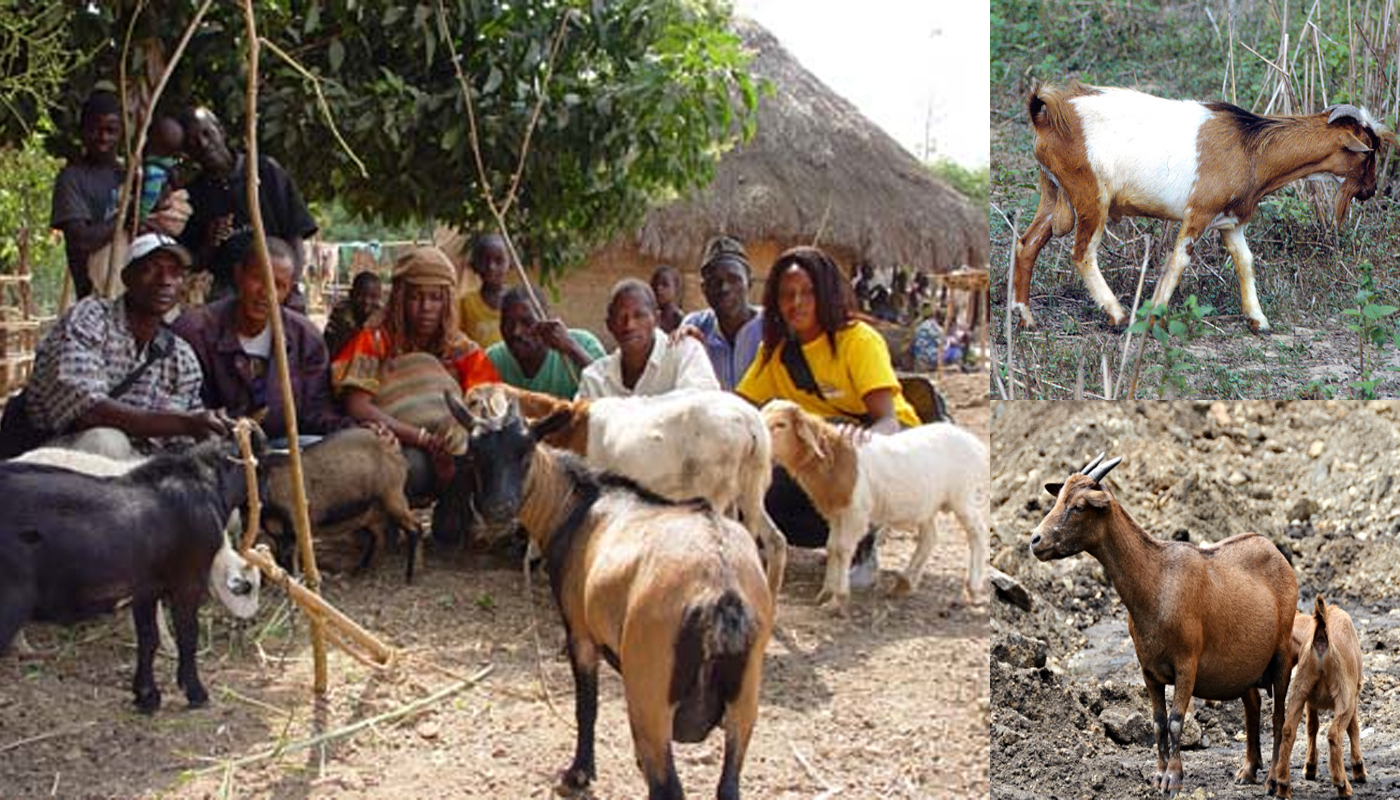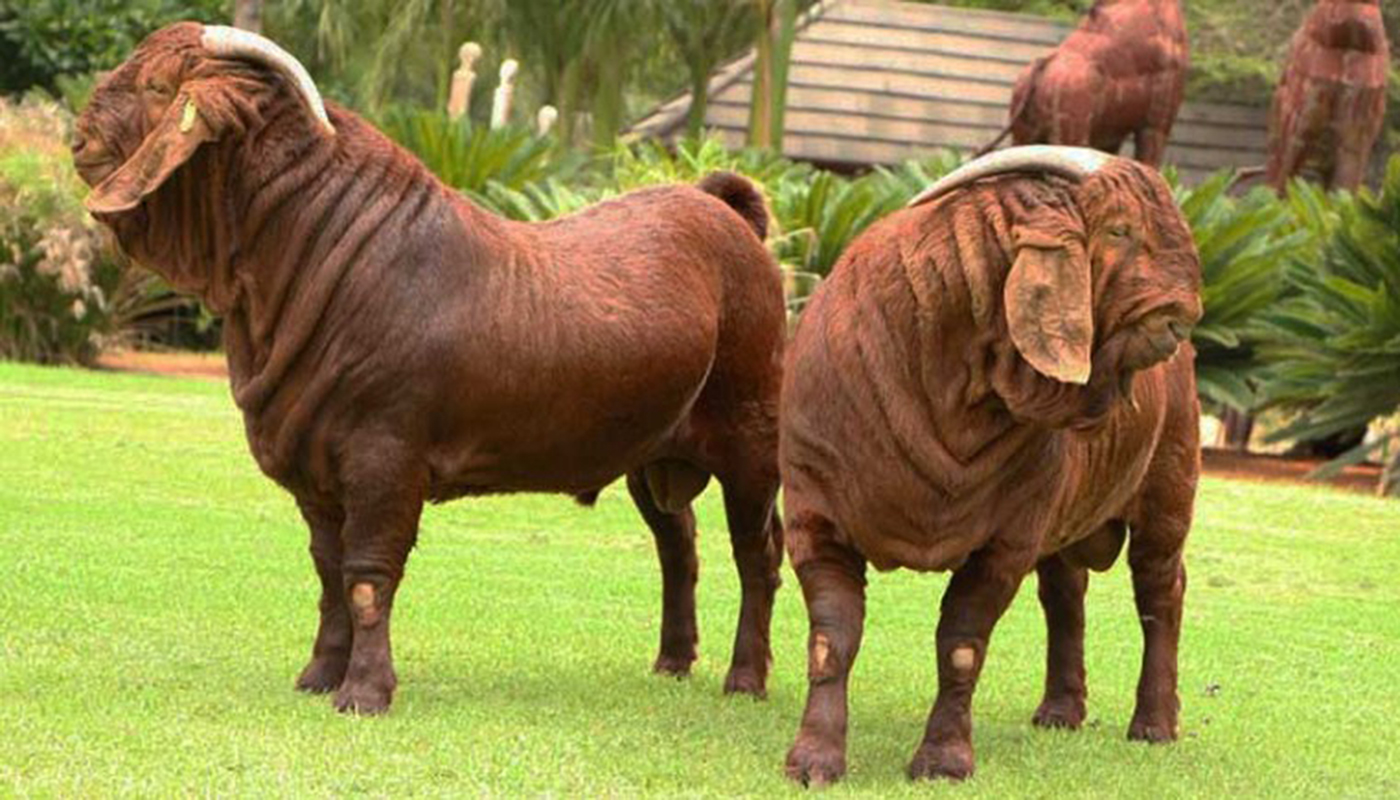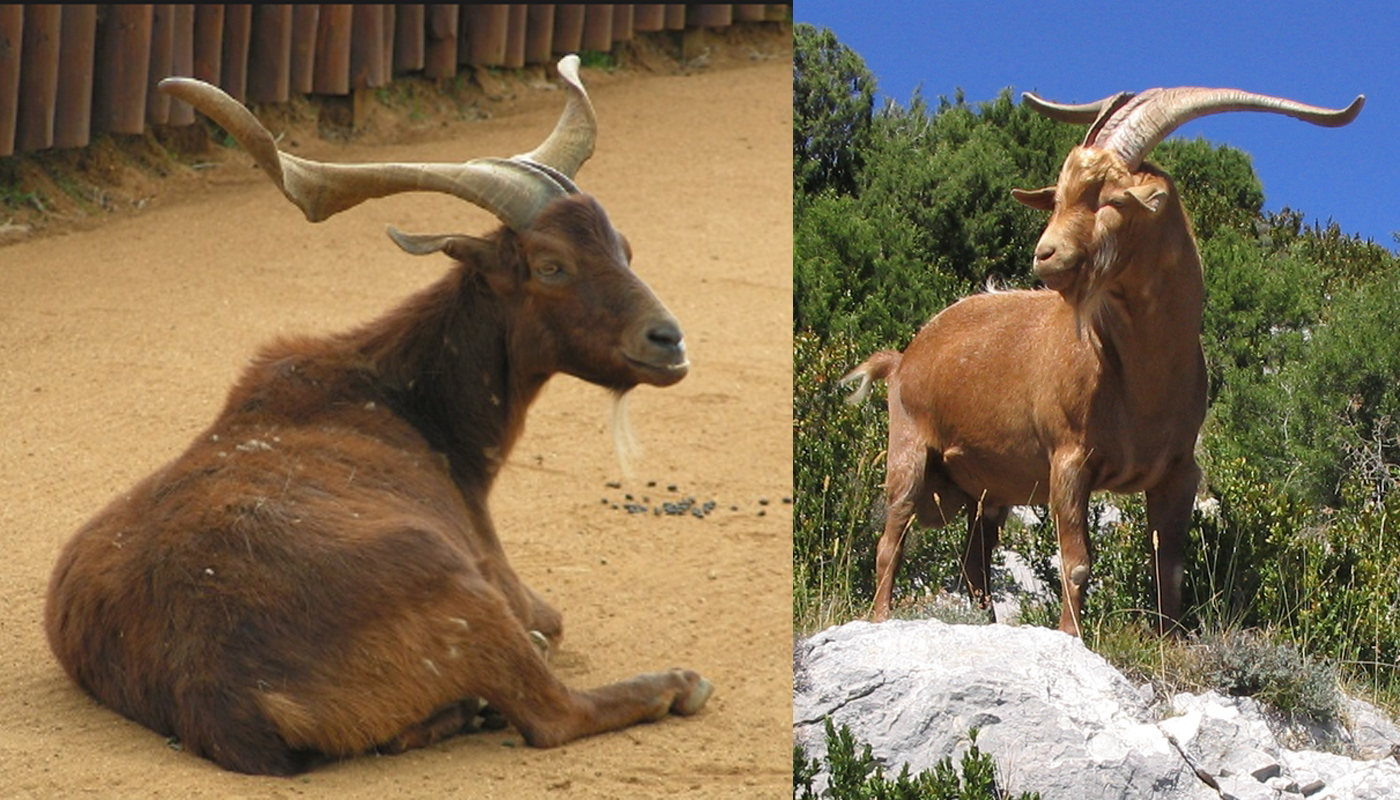
These beautiful hairy goats were once on the brink of extinction and with a breeding program, their numbers are slowly on the rise again.
Although it was primarily used for meat, milk and fiber these days it is used to control foliage growth in various reserves.
Dutch Landrace Goat Quick Profile Overview
| The Dutch Landrace Goat is quite an endangered species and is usually only found on various reserves where the goats help to control the foliage from over growing. | |
| Country of Origin: | Netherlands |
| Other Names: | Nederlandse Landgeit |
| Breed Size: | Medium |
| You may Also Like: | Top 12 Large to Largest Goat Breeds |
| You may Also Like: | 11 Smaller and Miniature Goat Breeds |
| Main Purpose: | Milk, meat and fiber – but no longer used commercially due to its population numbers being so slow. Now it is used in nature reserves to keep the vegetation and trees under control. |
| Can be used for | Breeding, Fiber, Meat, Milk |
| You may Also Like: | 10 Best Goat Breeds for Meat Production |
| You may Also Like: | Top 10 Best Dairy Goat Breeds |
| Temperament: | These lovely goats are quite calm but are not that keen on being around humans unless they have to be |
| Good with Kids? | They are more a self-sufficient goat that wants to fend for itself |
| You may Also Like: | 10 Best Goat Breeds to Keep as Pet |
| Ideal Environment: | Large space with a diverse landscape for them to idly roam about and graze upon. | Ideal Climate: | All Climates |
| Conservation Status: |
Not Listed by the *ALC Status Rare – they have a breeding program helping to increase the population |
| Health Issues? | No known health issues. If they are kept with other animals, it is advisable to ensure they do not pick up any external parasites on the abundance of hair. |
| Good Starter Goat? | Intermediate and up to a level of goat breeder/farmer/owner for these beautiful hairy goats. |
| Goat Associations: | National Association of Dutch Feral Goat Breeders |
| Goat Clubs: | No listed active clubs |
| Note: *ALC stands for American Livestock Conservancy | |
PHYSICAL CHARACTERISTICS
| The Dutch Landrace goat is a remarkably beautiful breed of goat. They have long flowing coat in shades of black, cream, brownish-gold and silver-grey. They have small faces and features that make them look like they have their noses in the air looking down on you. | ||
| Color(s): | Different shades and combinations of browns, greys and creams. They exhibit the same color patters of their coats |
|
| Goat⇒ | Doe | buck |
| Breed Weight: | 60 lbs. | 80 lbs. |
| Breed Height: | 60 cm at withers | 65 cm at withers |
| Hair: | Long and flowing | Long and flowing |
| Ears: | Stand erect to the sides of the head | Stand erect to the sides of the head |
| Horns: | They have many different variations of their horns. See the “general” section of this article. | They have many different variations of their horns. See the “general” section of this article. |
| Matures at age: | 5 to 15 months | 3 to 15 months |
| Puberty Age: | 4 to 9 months | 3 to 10 months |
| Breeding Age: | 18 months | 1 year |
| Breeding Traits: | 1 Breeding cycle | Can cover 20 does in a season |
DOE BREEDING & MILKING INFORMATION
| They breed once a year and usually in the spring | |
| Breeding Period/cycle: | Usually lasts 12 to 36 hours Ave. 21 days/18 to 24 days |
| Gestation Period: | 150 days |
| Kids: | 1 to 3 per kidding |
| Good Mothers? | Yes, they will wean their young |
| Lactation Period: | 284 days |
| Milking From: | 4 to 6 weeks after kidding |
| Milk Quality: | Good, Nutritious for the kid(s)/td> |
| Milking Level: | Due to their declining numbers, they are no longer used commercially |
| You may Also Like: | Top 10 Best Dairy Goat Breeds |
GOOD TO KNOW
| A bit more information to read about the beautiful Dutch Landrace Goat breed | |
| Where to buy them: | As they are quite an endangered species there are different breeding programs in operation to raise their numbers. .. |
| Agility: | They are agile and can jump quite high |
| Interact with other animals: | They do not really socialize with other species and will stick to their own herd |
GENERAL INFORMATION:
The Dutch Landrace goat has a few interesting horn structures such as:
Ammon horn – The horns rise from the goat’s head and then grows in a circular pattern making the horn look like a thick large ringlet at the side of their head.
This pattern is not a common goat’s horn and is seen more on sheep.
Scimitar horn – This is a common wild goat horn. The horns grow straight up and slightly apart to form a V-shape
Dorcas horn – The horns rise steeply from the head and then twist outwards in right angles. These are the most common of horn structure in the Dutch Landrace goat.
Moderate twist – These horns are long and thick and grow backward on the head in a slight curl with the ends twisting outwards.
Incipient Corkscrew – The horns grow almost straight up from the head they are thick and grow at an angle of V-Shape before curving outward with the ends having a corkscrew type twist.
HISTORY
The Dutch Landrace goat is one of the original goat breeds to be found in the Netherlands. They are closely related to the European Landrace goats such as the Danish Landrace goat, Finnish Landrace goat and the Swedish Landrace goat.
In the mid-20th century the Dutch Landrace goat was found to be dying out and in 1958 there were only of the goats left in the world. In 2000 the National Association of Dutch Feral Goat Breeders initiated a breeding program to save the breed. They were no longer used for commercial use instead they were to be used in various reserves in order to control the trees and vegetation in naturally open areas of the reserves.
They are over 1000 of these goats used in national reserves these days with their numbers slowly increasing each year.
They were primarily a breed that was used for milking but also for their meat and fiber production. The Dutch Landrace goat is a medium sized goat that has long silky type hair, short limbs and a stocky body.
VIDEO
USEFUL LINKS
- American Goat Society(AGS)
- American Goat Federation (AGF)
- American Dairy Goat Association (ADGA)
- American Cashmere Goat Association (ACGA)
- Canadian Meat Goat Association (CMGA)
- Canadian Goat Society (CGS)
- Animal Shelter (ASPCA)
- American Veterinary Medical Association
- American Poultry Association
- American Animal Welfare Society
- American Animal Control
- American Animal Husbandry Society
 Girgentana Goat Breed – Everything You Need to Know
Girgentana Goat Breed – Everything You Need to Know Boer Goat Breed – Everything You Need to Know
Boer Goat Breed – Everything You Need to Know West African Dwarf Goat Breed – Everything You Need to Know
West African Dwarf Goat Breed – Everything You Need to Know Kalahari Goat Breed – Everything You Need to Know
Kalahari Goat Breed – Everything You Need to Know Jonica Goat Breed – Everything You Need to Know
Jonica Goat Breed – Everything You Need to Know Oberhasli Goat Breed – Everything You Need to Know
Oberhasli Goat Breed – Everything You Need to Know Rove Goat Breed – Everything You Need to Know
Rove Goat Breed – Everything You Need to Know Booted Goat Breed – Everything You Need to Know
Booted Goat Breed – Everything You Need to Know Finding the Perfect Match: Matching Goat Breeds to Your Lifestyle
Finding the Perfect Match: Matching Goat Breeds to Your Lifestyle Verata Goat Breed – Everything You Need to Know
Verata Goat Breed – Everything You Need to Know Sarda Goat Breed – Everything You Need to Know
Sarda Goat Breed – Everything You Need to Know Chamois Goat Breed – Everything You Need to Know
Chamois Goat Breed – Everything You Need to Know